Pikeville
Science and
Math Camp 2007
Week One
The
campers had a
lot of fun this year. Here are pictures of the five groups.
Chemistry
This year campers
learned about
laboratory safety procedures then did chromatography of
inks.
These will prove useful when they work to solve a heinous
crime later in the week.
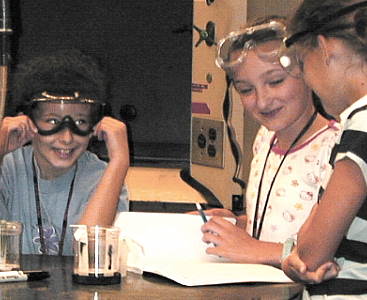 They learned how to
identify rabbit,
dog, cat, and human hair and
fabric fibers and other
evidence that might be found.
They learned how to
identify rabbit,
dog, cat, and human hair and
fabric fibers and other
evidence that might be found.
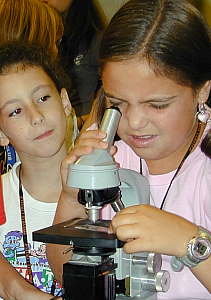
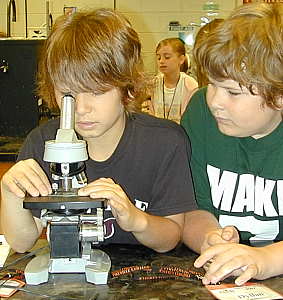
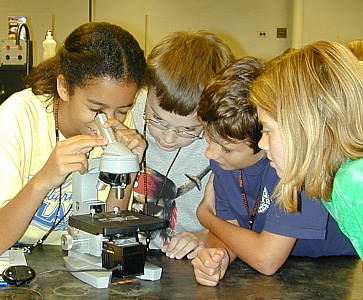
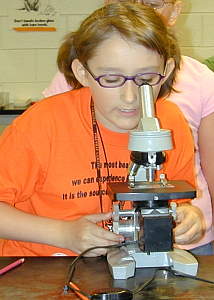
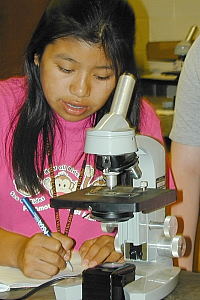
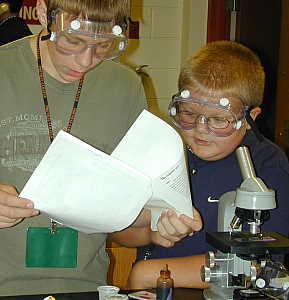
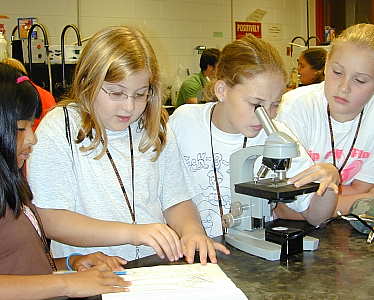 Various powders were
analyzed.
They learned how to distinguish
salt, baking soda, baking powder, sugar, plaster of paris, and corn
starch.
Various powders were
analyzed.
They learned how to distinguish
salt, baking soda, baking powder, sugar, plaster of paris, and corn
starch.
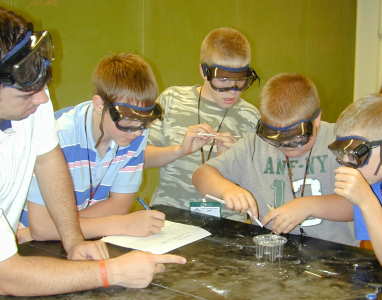
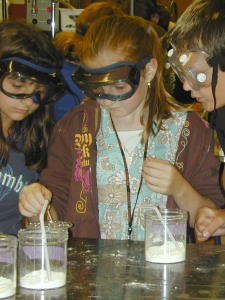
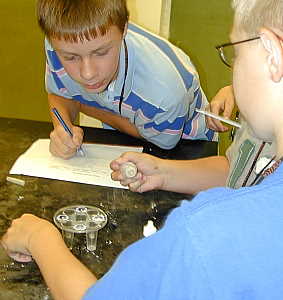
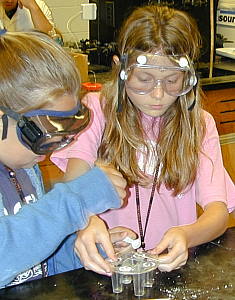 They learned how to
determine blood
types so they could apply that
skill to help solve a crime.
They learned how to
determine blood
types so they could apply that
skill to help solve a crime.
 The chemistry instructor
this year is
a camp alumni from
years ago.
Astronomy
Here they made devices that
illustrated how the position of the circumpolar constellations change
over the course of the year and the course of a night.
The chemistry instructor
this year is
a camp alumni from
years ago.
Astronomy
Here they made devices that
illustrated how the position of the circumpolar constellations change
over the course of the year and the course of a night.
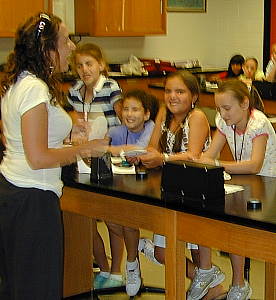
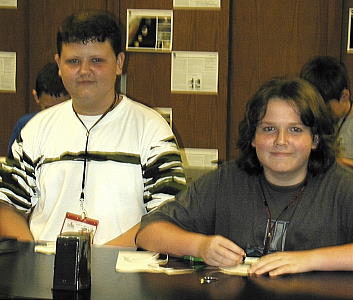
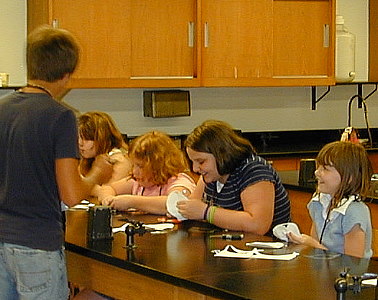 Another of
the projects was to build a spectroscope that could be used to split
light into all of its colors.
Another of
the projects was to build a spectroscope that could be used to split
light into all of its colors.
Astronomers can use the same
technique to figure out what elements are in distant stars
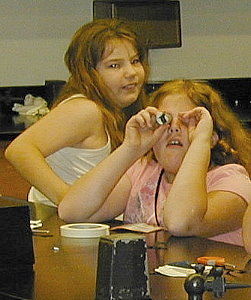 They built launchers for
pop bottle
rockets powered by air pressure and water.
They built launchers for
pop bottle
rockets powered by air pressure and water.
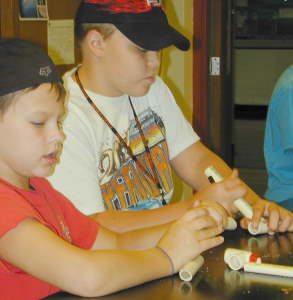
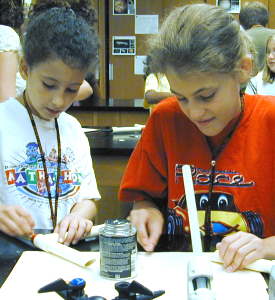
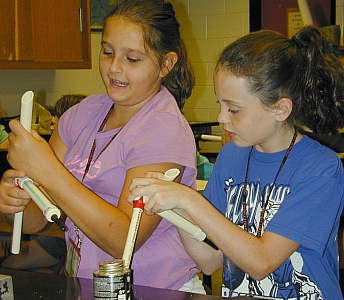 And then built and
decorated the
rockets.
And then built and
decorated the
rockets.
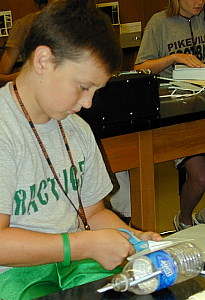
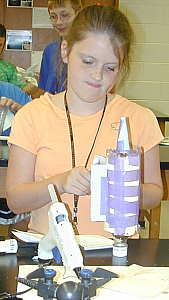 The
astronomy instructor is an alumnus of the camp as
well.
Physics
Liquid nitrogen was used to
demonstrate how gases and solids change with temperature.
Superconductivity and the effect extreme cold has on the quantum levels
and therefore the colors produced by light emitting diodes
(LEDs). They saw how fog, frost and snow could be formed when
the
moisture in the air was cooled and were very surprised when a banana
was used to drive a nail and a flower disintegrated when it was cooled
and then crushed.
The
astronomy instructor is an alumnus of the camp as
well.
Physics
Liquid nitrogen was used to
demonstrate how gases and solids change with temperature.
Superconductivity and the effect extreme cold has on the quantum levels
and therefore the colors produced by light emitting diodes
(LEDs). They saw how fog, frost and snow could be formed when
the
moisture in the air was cooled and were very surprised when a banana
was used to drive a nail and a flower disintegrated when it was cooled
and then crushed.
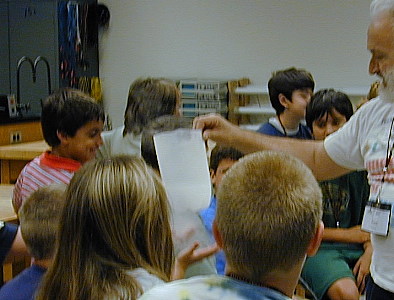 They checked the
coefficient of
friction with and without lubrication.
They checked the
coefficient of
friction with and without lubrication.
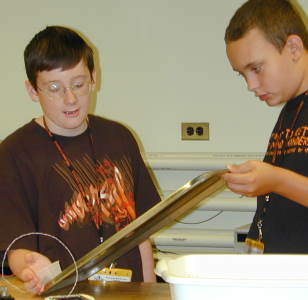
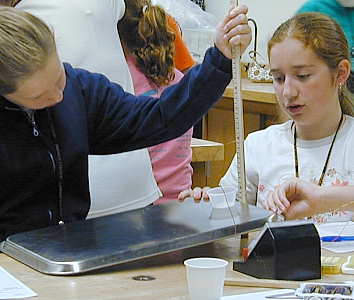
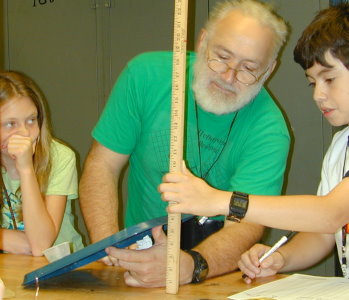
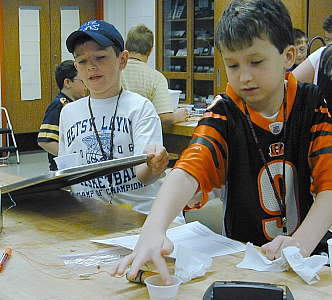 And investigated the
viscosity
of things you might find in a fast food restaurant ranging
from
liquid soap to ketchup and mayonnaise.
And investigated the
viscosity
of things you might find in a fast food restaurant ranging
from
liquid soap to ketchup and mayonnaise.
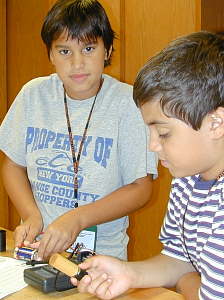
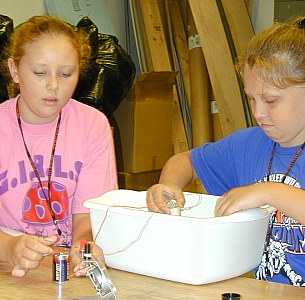
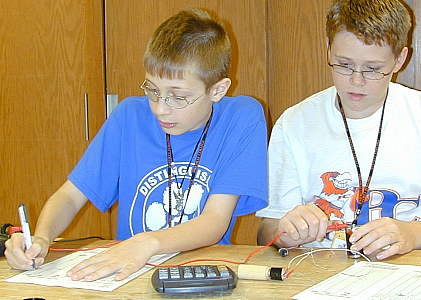
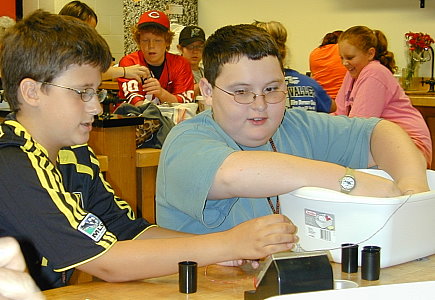 They stood on
eggs.
There was some
trepidation as the
weight went up.
They stood on
eggs.
There was some
trepidation as the
weight went up.
These two weren't even close to the maximum weight.
Listed
below is the weight in
pounds that a pair of eggs supported when each of the groups tried the
experiment.
183.7 green,
235.8
yellow, 227.5 red, 246.8 blue
The orange group was
unique in
that after one egg broke the other survived until it had
195.0
pounds on it.
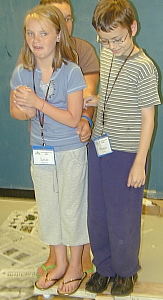
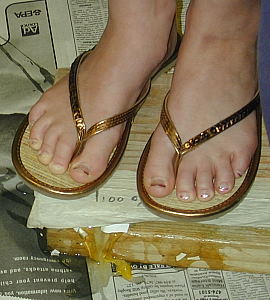 Computers
Puzzles were used to
illustrate
computer logic and they saw a film about how computers work.
Computers
Puzzles were used to
illustrate
computer logic and they saw a film about how computers work.
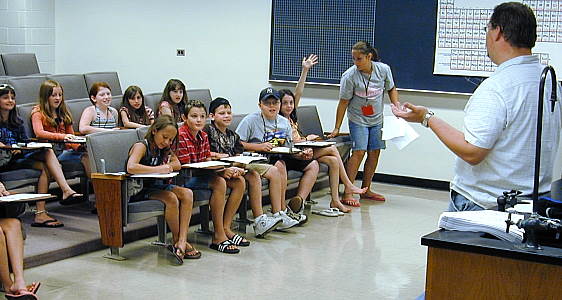 Each of the students
used computers
for several tasks.
One of the most
challenging was to
make a composite picture of their physics instructor, me.
Each of the students
used computers
for several tasks.
One of the most
challenging was to
make a composite picture of their physics instructor, me.

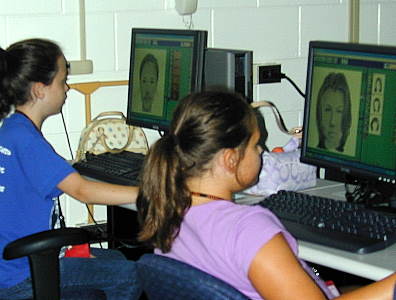
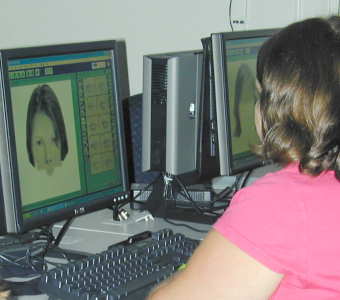
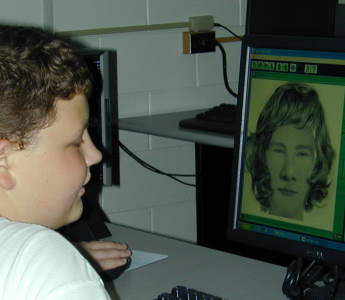 Here are some of the
results.
Here are some of the
results.



















 The winners are shown
with their
drawings near the bottom of this page.
Biology
The campers carefully
dissected owl
pellets and found the bones of rodents.
The winners are shown
with their
drawings near the bottom of this page.
Biology
The campers carefully
dissected owl
pellets and found the bones of rodents.
They discovered
ribs, teeth, vertebrae, jaws, skulls, and thigh bones.
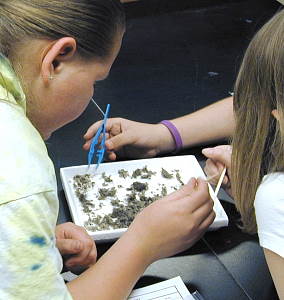
 Then they
checked their own thumbprints to see what the pattern was.
Then they
checked their own thumbprints to see what the pattern was.

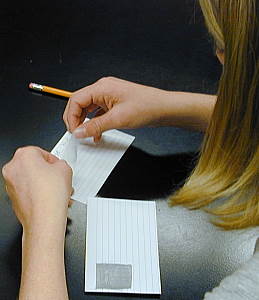 They learned how to
determine a
person's blood type.
They learned how to
determine a
person's blood type.
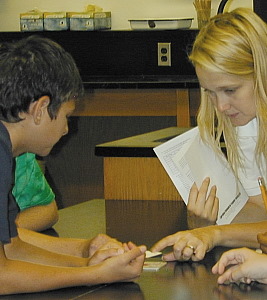
 And how to interpret
blood splatter
patterns to learn about a crime.
And how to interpret
blood splatter
patterns to learn about a crime.
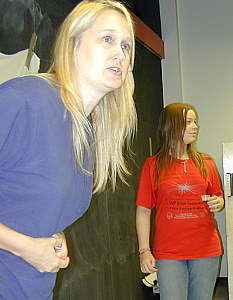
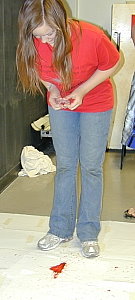
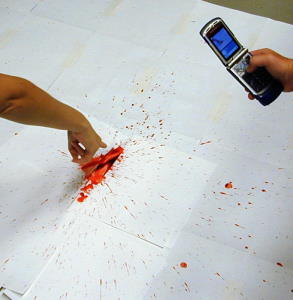
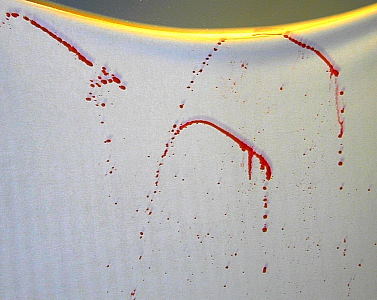 Science
Olympics
A series of competitions
were held on
Thursday.
In this one the
girls were using marshmallows and toothpicks to build the tallest tower
that they could.
Science
Olympics
A series of competitions
were held on
Thursday.
In this one the
girls were using marshmallows and toothpicks to build the tallest tower
that they could.
 And the boys were
recording their
score in another event.
And the boys were
recording their
score in another event.
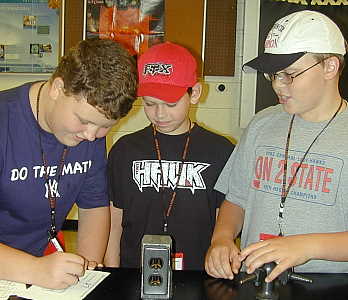 These guys were trying
to duplicate a
structure that they hadn't seen
using only the instructions written by another member of their team.
These guys were trying
to duplicate a
structure that they hadn't seen
using only the instructions written by another member of their team.
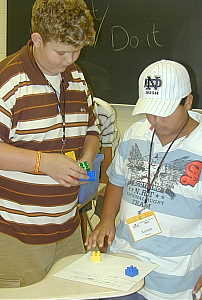 Build a paper
tower.
Make it as tall as
possible using
only one sheet of paper and tape.
Build a paper
tower.
Make it as tall as
possible using
only one sheet of paper and tape.
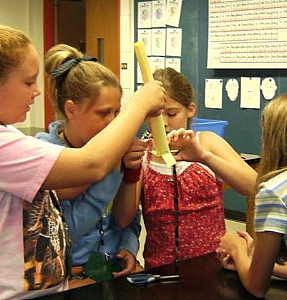 Or a boat out
of a square of
aluminum foil. How many marbles can sail in it?
Or a boat out
of a square of
aluminum foil. How many marbles can sail in it?
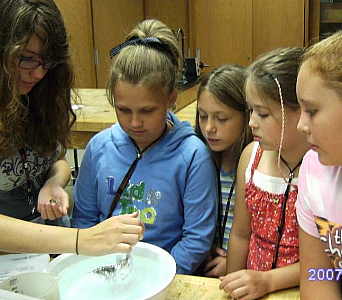 A water balloon
slingshot was a hit
with the kids.
A water balloon
slingshot was a hit
with the kids.
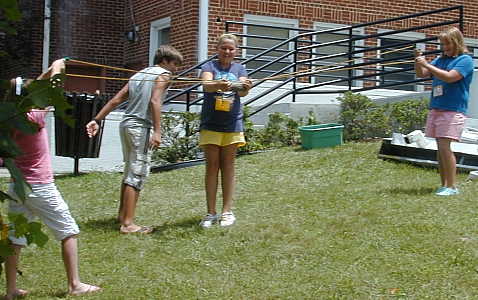 The scene of the crime
that had to be
solved using the forensic techniques that they had learned in their
classes.
The scene of the crime
that had to be
solved using the forensic techniques that they had learned in their
classes.
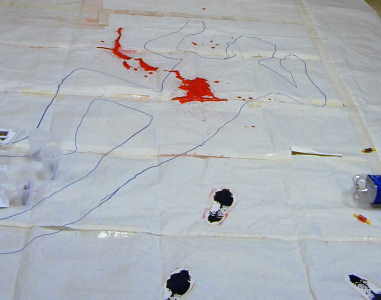 The big contest was to
build a
container that could catch an egg
dropped from up to 6.5 meters above it.
The big contest was to
build a
container that could catch an egg
dropped from up to 6.5 meters above it.
The shorter your
container the higher the score.
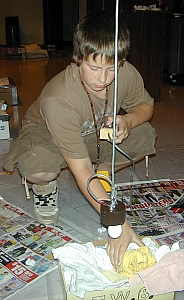
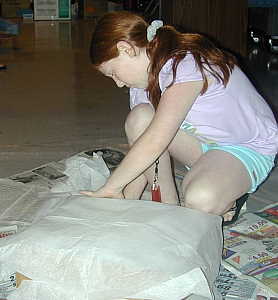 Here are some of the
entries. A
lot of thought and effort went
into them.
Here are some of the
entries. A
lot of thought and effort went
into them.
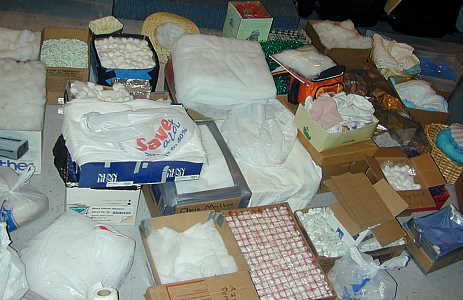 The
winners of the
various contests
The
winners of the
various contests

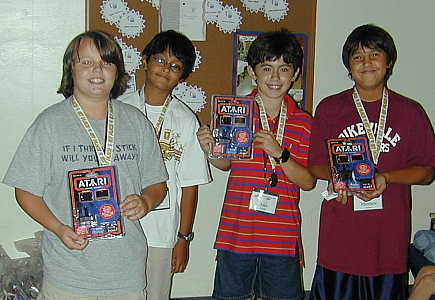

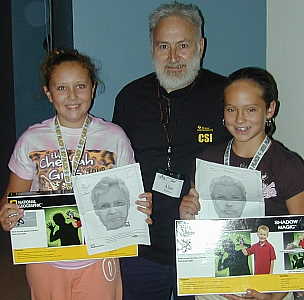
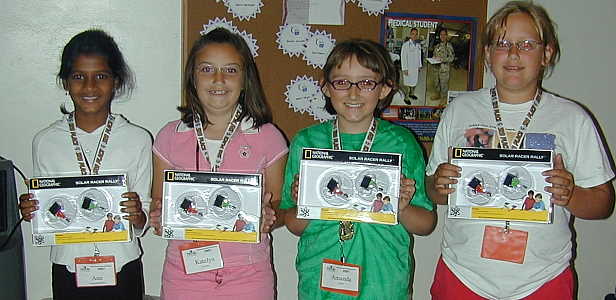
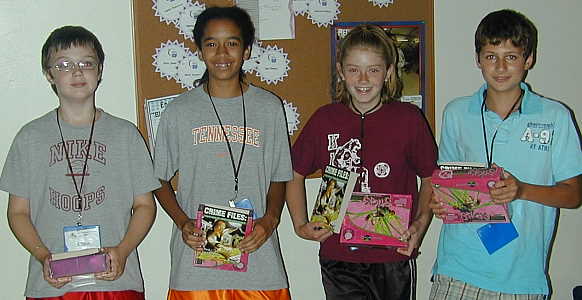
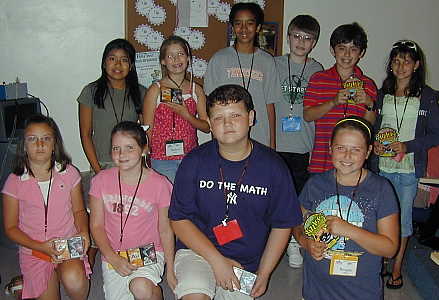 COSI
On Friday most of the students
went to a science museum in Columbus Ohio. Lots of hands on
activities.
An exhibit on animation
amused these
girls when they saw how their
antics were transformed.
COSI
On Friday most of the students
went to a science museum in Columbus Ohio. Lots of hands on
activities.
An exhibit on animation
amused these
girls when they saw how their
antics were transformed.
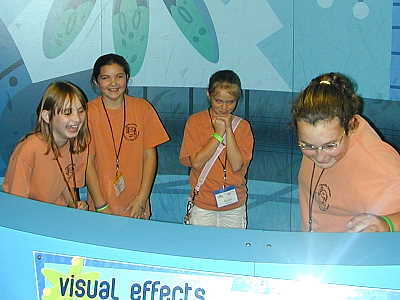 Controlling mars rovers,
riding a
unicycle on a tight wire, and learning how cel animation is done.
Controlling mars rovers,
riding a
unicycle on a tight wire, and learning how cel animation is done.
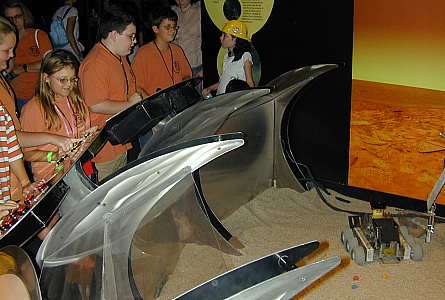

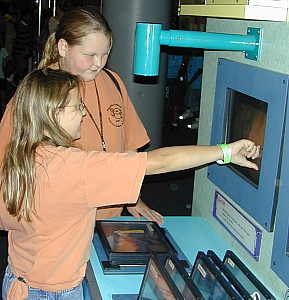 What does several
hundred thousand
volts feel like?
What does several
hundred thousand
volts feel like?
 You are an iron atom
bound to an
oxygen atom when there is an aluminum atom nearby and a little spark to
start the reaction.
That is the formula for
a spectacular
reaction, thermite.
You are an iron atom
bound to an
oxygen atom when there is an aluminum atom nearby and a little spark to
start the reaction.
That is the formula for
a spectacular
reaction, thermite.
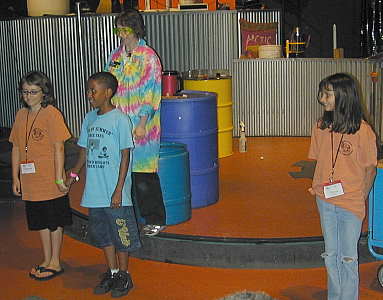
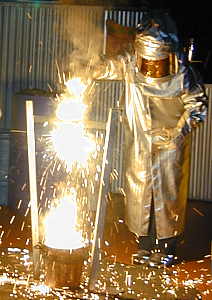 We all had a great time.
We all had a great time.
Go
to our Science
Fun page
Go to our Travels page
Go
to our Personal
home page
Go
to our Community
page
E-mail Nancy
and
Alan

